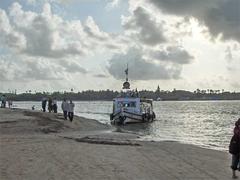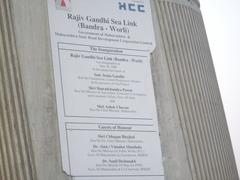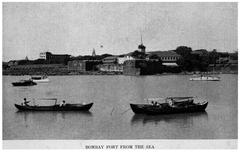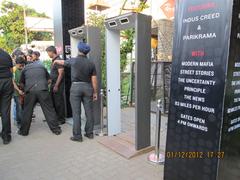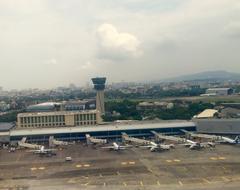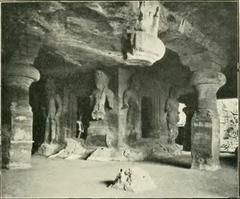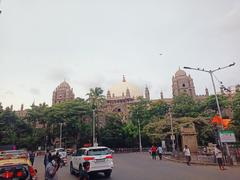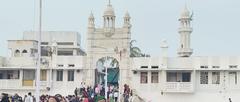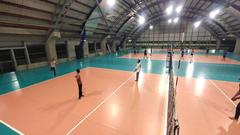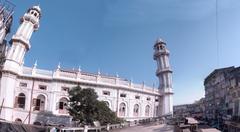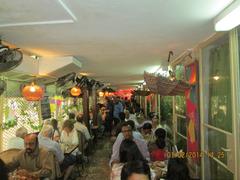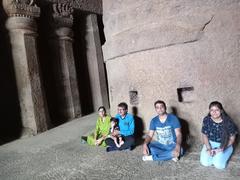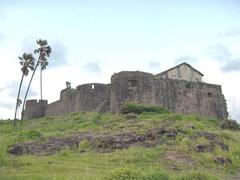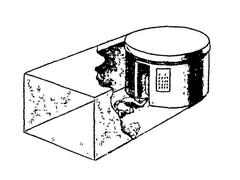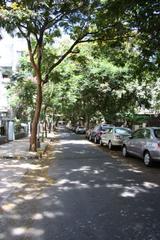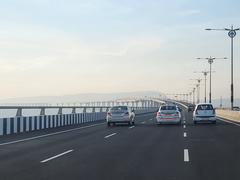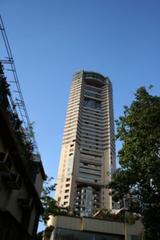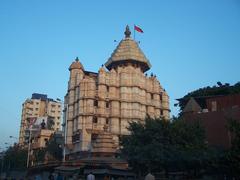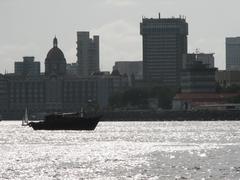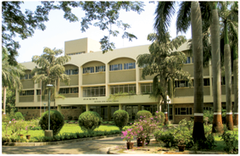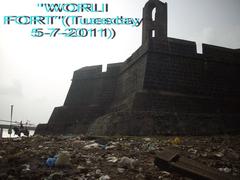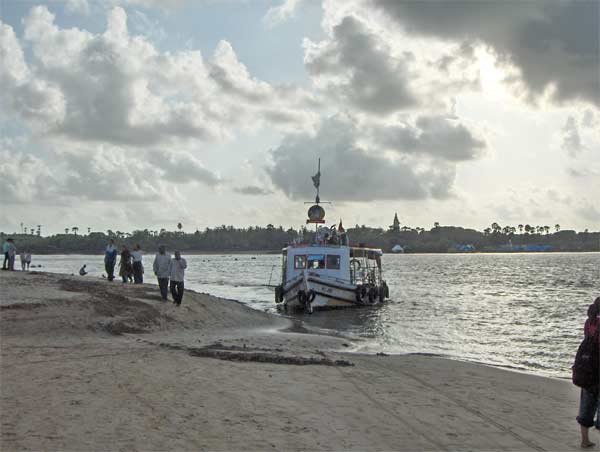
Comprehensive Guide to Visiting Marvé Beach, Mumbai, India
Date: 17/08/2024
Introduction
Marvé Beach, located in the western suburb of Malad in Mumbai, India, stands as a testament to the city’s rich historical and cultural heritage. Known for its serene environment and picturesque views of the Arabian Sea and Malad Creek, Marvé Beach has been a favored retreat since the colonial era. The beach’s history is deeply interwoven with Mumbai’s colonial past, serving as a leisure spot for the British elite and a strategic location due to its proximity to Marvé Creek, a natural harbor for small boats and fishing activities (Mumbai Tourism).
Over the years, Marvé Beach has evolved into a hub of cultural convergence, playing host to traditional activities and significant festivals such as Ganesh Chaturthi. The beach also holds environmental and economic importance, being part of Mumbai’s coastal ecosystem and a vital source of livelihood for local fishermen. The juxtaposition of colonial-era bungalows and modern developments around Marvé Beach adds to its unique architectural charm (Tripoto).
This comprehensive guide delves into the multifaceted significance of Marvé Beach, exploring its historical, cultural, environmental, economic, architectural, and social dimensions. Additionally, practical visitor information, including visiting hours, travel tips, and nearby attractions, will be provided to help you plan your visit and fully appreciate this coastal gem of Mumbai.
Table of Contents
- Introduction
- Historical Background
- Cultural Significance
- Environmental Significance
- Economic Significance
- Architectural Significance
- Social Significance
- Challenges and Preservation Efforts
- Practical Information for Visitors
- Conclusion
- Sources
Historical Background
Marvé Beach, located in the Malad suburb of Mumbai, has a rich historical tapestry that dates back to the colonial era. During the British Raj, Marvé Beach was part of the larger Salsette Island, which was a focal point for colonial activities. The British developed the area as a retreat, leveraging its serene coastal environment. The beach was also a strategic location due to its proximity to the Marvé Creek, which served as a natural harbor for small boats and fishing activities.
In the early 20th century, Marvé Beach became a popular spot for the local elite and expatriates. The area saw the construction of several bungalows and holiday homes, many of which still stand today as relics of a bygone era. The beach’s historical significance is further accentuated by its role in the local fishing industry, which has been a cornerstone of the community’s livelihood for centuries.
Cultural Significance
Marvé Beach holds a special place in the cultural fabric of Mumbai. It is not just a recreational spot but also a site of cultural convergence. The beach is frequented by locals who come to partake in traditional activities such as kite flying, beach cricket, and evening walks. These activities are deeply ingrained in the local culture and offer a glimpse into the daily lives of Mumbai’s residents.
The beach is also a venue for various cultural festivals and events. One of the most notable is the annual Ganesh Chaturthi celebrations, where idols of Lord Ganesha are immersed in the sea. This event attracts thousands of devotees and is a spectacle of religious fervor and community spirit. The beach’s role in such cultural events underscores its importance as a communal space that brings people together.
Environmental Significance
Marvé Beach is part of the larger coastal ecosystem of Mumbai, which includes mangroves, creeks, and estuaries. The beach and its surrounding areas are home to a variety of flora and fauna, making it an important ecological zone. The mangroves near Marvé Creek serve as a natural barrier against coastal erosion and provide a habitat for numerous species of birds, fish, and crustaceans.
Efforts have been made to preserve the ecological balance of the area. Local NGOs and environmental groups frequently organize clean-up drives and awareness campaigns to educate the public about the importance of maintaining the beach’s natural beauty. These initiatives are crucial in ensuring that Marvé Beach remains a sustainable and vibrant part of Mumbai’s coastal landscape.
Economic Significance
The economic significance of Marvé Beach cannot be overstated. The beach is a hub for local fishermen who rely on the sea for their livelihood. Fishing activities at Marvé Beach contribute significantly to the local economy, providing employment and sustenance to many families. The fish market near the beach is a bustling area where fresh catch is sold daily, attracting buyers from across the city.
Tourism also plays a vital role in the local economy. Marvé Beach attracts both domestic and international tourists, contributing to the hospitality and service sectors. Local vendors sell snacks, souvenirs, and other items, adding to the economic vibrancy of the area. The beach’s popularity as a tourist destination has led to the development of various amenities, including resorts, restaurants, and recreational facilities.
Architectural Significance
The architectural landscape around Marvé Beach is a blend of colonial-era structures and modern developments. The bungalows and holiday homes built during the British era are characterized by their distinct architectural styles, featuring large verandas, sloping roofs, and intricate woodwork. These structures offer a glimpse into the architectural heritage of the region and are a testament to the area’s historical significance.
In recent years, there has been a surge in modern architectural developments, including luxury apartments and resorts. These new structures are designed to offer panoramic views of the Arabian Sea and cater to the growing demand for upscale accommodations. The juxtaposition of old and new architecture adds to the unique charm of Marvé Beach, making it a visually appealing destination.
Social Significance
Marvé Beach serves as a social hub for the local community. It is a place where people from different walks of life come together to relax, socialize, and engage in recreational activities. The beach is particularly popular among families and young couples who come to enjoy the scenic beauty and tranquil environment.
The beach also plays a role in social initiatives and community-building activities. Local organizations often use the beach as a venue for social awareness campaigns, health camps, and charity events. These activities foster a sense of community and collective responsibility, highlighting the beach’s role as a social cornerstone in the lives of Mumbai’s residents.
Challenges and Preservation Efforts
Despite its many significances, Marvé Beach faces several challenges, including pollution, coastal erosion, and unregulated development. The influx of tourists and local visitors often leads to littering, which poses a threat to the beach’s ecological balance. Coastal erosion, exacerbated by climate change, is another pressing issue that threatens the beach’s long-term sustainability.
To address these challenges, various preservation efforts have been initiated. The local government, in collaboration with environmental groups, has implemented measures to control pollution and manage waste. Coastal protection projects, such as the construction of sea walls and the planting of mangroves, are also underway to mitigate the effects of erosion. These efforts are crucial in preserving the natural and cultural heritage of Marvé Beach for future generations.
Practical Information for Visitors
Visiting Hours
Marvé Beach is accessible 24 hours a day, but it is advisable to visit during daylight hours for safety and to fully enjoy the scenic beauty.
Tickets
There is no entry fee for Marvé Beach. However, some nearby attractions may have their own ticketing systems.
Travel Tips
The beach is easily accessible by local trains, buses, and auto-rickshaws. The nearest railway station is Malad. Make sure to carry sunscreen, water, and snacks.
Nearby Attractions
While visiting Marvé Beach, you can also explore nearby sites like Aksa Beach, Madh Island, and Essel World.
Conclusion
Marvé Beach is a multifaceted destination with a rich history and significant cultural, environmental, economic, architectural, and social importance. Its preservation is vital for maintaining the ecological balance, supporting local livelihoods, and sustaining the cultural fabric of Mumbai. Through concerted efforts and community involvement, Marvé Beach can continue to be a cherished landmark for years to come.
For more information, you can visit Mumbai Tourism.
